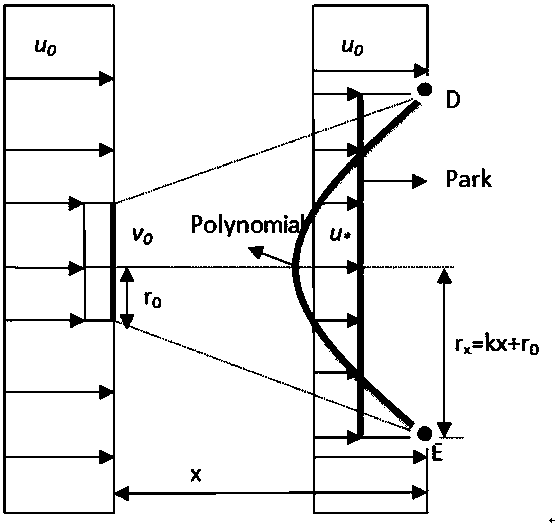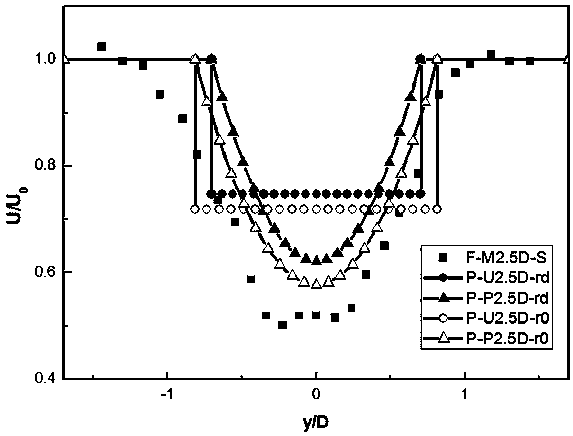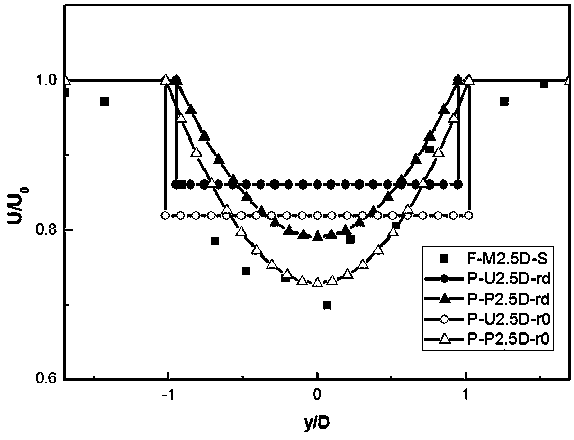A Two-dimensional Wake Numerical Simulation Method
A numerical simulation and tail flow technology, applied in data processing applications, electrical digital data processing, special data processing applications, etc., can solve problems such as complex forms, inefficient calculations, difficult coding, etc., to achieve simple forms, efficient calculations, and easy The effect of encoding
- Summary
- Abstract
- Description
- Claims
- Application Information
AI Technical Summary
Problems solved by technology
Method used
Image
Examples
Embodiment Construction
[0028] The present invention will be specifically introduced below in conjunction with the accompanying drawings and specific embodiments.
[0029] refer to Figure 8 As shown, the technical solution of the invention will be described in detail below in conjunction with the accompanying drawings.
[0030] 1. Calculate the wake expansion coefficient:
[0031] According to the hub height z of the wind turbine, the local surface roughness z 0 , to calculate the wake expansion coefficient k
[0032] k=0.5 / ln(H / z 0 ) (1)
[0033] When the surface roughness at the location of the pre-installed wind turbine is not known, we can use 0.075 for onshore wind turbines and 0.05 for offshore wind turbines according to the suggestion of Barthlmie et al.
[0034] 2. Park model
[0035] The Park model assumes that the wake expands linearly, the wind speed of the wake changes with the distance of the wind direction x, and the wind speed in the radial direction has a constant distribution....
PUM
 Login to View More
Login to View More Abstract
Description
Claims
Application Information
 Login to View More
Login to View More - R&D
- Intellectual Property
- Life Sciences
- Materials
- Tech Scout
- Unparalleled Data Quality
- Higher Quality Content
- 60% Fewer Hallucinations
Browse by: Latest US Patents, China's latest patents, Technical Efficacy Thesaurus, Application Domain, Technology Topic, Popular Technical Reports.
© 2025 PatSnap. All rights reserved.Legal|Privacy policy|Modern Slavery Act Transparency Statement|Sitemap|About US| Contact US: help@patsnap.com



